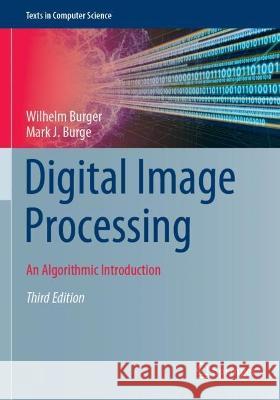Digital Image Processing » książka
topmenu
Digital Image Processing
ISBN-13: 9783031063435 / Angielski / Miękka / 2023
Digital Image Processing
ISBN-13: 9783031063435 / Angielski / Miękka / 2023
cena 321,26
(netto: 305,96 VAT: 5%)
Najniższa cena z 30 dni: 308,41
(netto: 305,96 VAT: 5%)
Najniższa cena z 30 dni: 308,41
Termin realizacji zamówienia:
ok. 22 dni roboczych
Dostawa w 2026 r.
ok. 22 dni roboczych
Dostawa w 2026 r.
Darmowa dostawa!
This modern, self-contained textbook provides an accessible introduction to the field from the perspective of a practicing programmer, supporting a detailed presentation of the fundamental concepts and techniques with practical exercises and fully worked out implementation examples. This much-anticipated 3rd edition of the definitive textbook on Digital Image Processing has been completely revised and expanded with new content, improved illustrations and teaching material.
Topics and features:
- Contains new chapters on fitting of geometric primitives, randomized feature detection (RANSAC), and maximally stable extremal regions (MSER).
- Includes exercises for most chapters and provides additional supplementary
- materials and software implementations at an associated website.
- Uses ImageJ for all examples, a widely used open source imaging environment that
- can run on all major platforms.
- Describes each solution in a stepwise manner in mathematical form, as abstract pseudocode algorithms, and as complete Java programs that can be easily ported to other programming languages.
- Presents suggested outlines for a one- or two-semester course in the preface.
Advanced undergraduate and graduate students will find this comprehensive and example-rich textbook will serve as the ideal introduction to digital image processing. It will also prove invaluable to researchers and professionals seeking a practically focused self-study primer.











